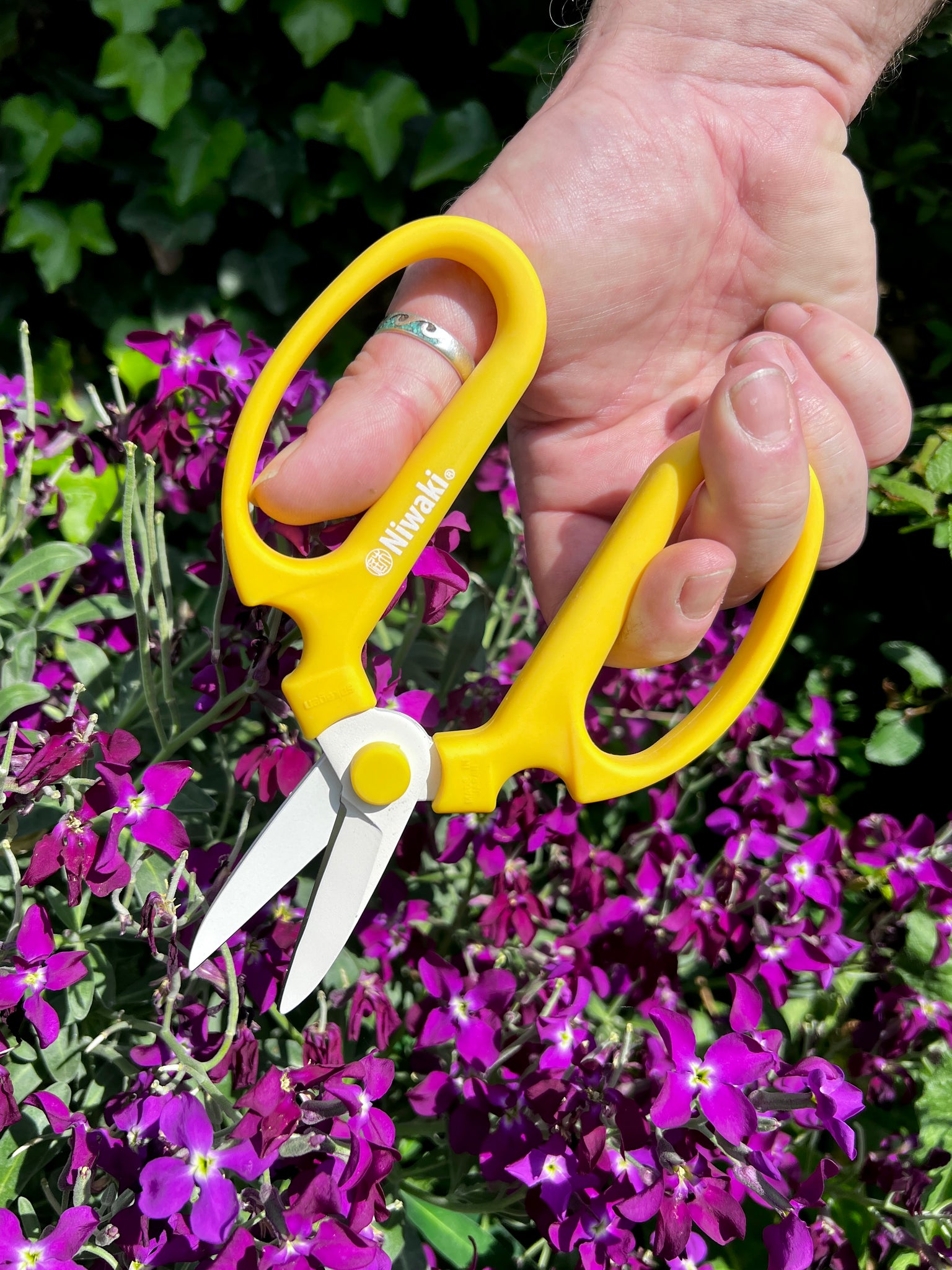Many gardening terms are not at all obvious, creating a false sense of difficulty or complexity. My ‘In The Know’ guides are designed to introduce you to time-honoured techniques used by experienced gardeners so that everyone can benefit from them.
What is it?
Deadheading is the term used for removing faded or dying flowers from a plant in order to concentrate its efforts on producing more flowers and/or to prevent it from producing seeds.
Like weeding and mowing, deadheading is one of those routine tasks that gardeners either love or hate, but it's important that it gets done!
Why do it?
There are five main reasons why we should deadhead regularly:
- To encourage the appearance of more flowers.
- To keep plants looking neat and tidy.
- To prevent spent flowers from shedding their petals on the ground or on top of other plants.
- To prevent plants from producing seeds. This in turn encourages plants to channel their energy into producing more flowers, healthier foliage and stronger roots and bulbs.
- In the case of annuals, it can help them to live for longer.
If we understand that a plant's main purpose in life is to survive for long enough to reproduce and guarantee the next generation of its kind, it’s easier to appreciate why deadheading flowering plants is effective. By removing the flower before it produces seed (thankfully not all flowers do this), we are effectively setting the plant back and forcing it to try again by producing more flowers. That generally suits us, unless we want to collect the seeds, in which case a few flowers can be left in situ at the end of the season to 'set' seed for sowing at a later date.

When do I do it?
Flowers should be deadheaded the moment they go past their best. Some age gracefully, others do not, but we generally want to catch them before the petals fall to the ground and make a mess. If they've been left for too long, you will notice a seed pod beginning to develop behind the flower. Don't worry if you catch a flower a bit late, just remove it as soon as you can and no harm will be done.
Regular deadheading, daily if possible, is especially important with spring and summer bedding plants. These are 'live fast, die young' plants and they will curl up and die very quickly if they think their job is done. Although it's tedious, removing the spent flowers of petunias, violas and polyanthus will significantly prolong their life and your enjoyment of them.
You will need:
- A sharp pair of secateurs, scissors or snips,
- Gardening gloves to protect your hands, particularly if you’re sensitive to particular plants (see below),
- A bucket or trug to collect the deadheads in.
How do I do it?
If you have a lot of deadheading to do, or the flowers have stems that are tough and woody, it's best to use a pair of snips or secateurs for speed and accuracy. If you only have only one or two blooms to attend to, then you can use scissors or your finger and thumb to part the flower gently from its stem.
Generally speaking, you only need to remove the flower head and the seed pod or capsule immediately behind it. However, if the remaining stem would look untidy, you can remove that too. Be careful not to remove more of the plant than you need to as many types will produce new flowers very close to the older ones. Avoid removing too much foliage or any developing buds. There are exceptions, for example, lady's mantle (Alchemilla mollis), lupin, delphinium and hardy geraniums. For these plants, cutting the flowers and foliage back, almost to ground level, will produce a new flush of foliage and sometimes a second display of flowers as well.

If deadheading sounds like hard work then there's some good news. Many plants either deadhead themselves, don't produce seed or won't suffer if seed pods develop - these include fuchsias, salvias and begonias. Additionally, if a plant produces a decorative seedhead then you can leave these to develop naturally if you wish. Teasel, millet, maize, opium poppies, love-in-a-mist, sunflower, arum lily, roses producing colourful hips and any plant producing an edible fruit or berry can be left to its own devices. (Many of these plants provide valuable winter food sources for wildlife, so you'll be saving yourself a job and doing nature a favour.) Do be aware that they may shed seed and regrow in your garden the following year: on my allotment, I've never needed to sow sunflowers as the local parakeets see to it that a new batch is sown in the late autumn, emerging reliably the following May.
'Deadheads' can be safely composted. If they're fresh the seeds will not be viable and there's little risk of them germinating later on. However, if you are adding dry seedpods to your compost bin, you may find that the seeds survive and pop up in unexpected places when you spread the compost on your garden later. This may or may not be a good thing, depending on how much you love the plant.
What else should I know?
Some plants have toxic or irritant sap so if deadheading using the finger and thumb method wash your hands straight afterwards or wear a good pair of gardening gloves. Some plants to be wary of are daffodil (Narcissus), monkshood (Aconitum), lily of the valley (Convallaria), foxglove (Digitalis), certain primulas, spurge (Euphorbia), hydrangea, oleander and castor oil plant (Ricinus).
See Also:
In the Know - The Chelsea Chop








